Siyu Yuan
The Lighthouse of Language: Enhancing LLM Agents via Critique-Guided Improvement
Mar 20, 2025Abstract:Large language models (LLMs) have recently transformed from text-based assistants to autonomous agents capable of planning, reasoning, and iteratively improving their actions. While numerical reward signals and verifiers can effectively rank candidate actions, they often provide limited contextual guidance. In contrast, natural language feedback better aligns with the generative capabilities of LLMs, providing richer and more actionable suggestions. However, parsing and implementing this feedback effectively can be challenging for LLM-based agents. In this work, we introduce Critique-Guided Improvement (CGI), a novel two-player framework, comprising an actor model that explores an environment and a critic model that generates detailed nature language feedback. By training the critic to produce fine-grained assessments and actionable revisions, and the actor to utilize these critiques, our approach promotes more robust exploration of alternative strategies while avoiding local optima. Experiments in three interactive environments show that CGI outperforms existing baselines by a substantial margin. Notably, even a small critic model surpasses GPT-4 in feedback quality. The resulting actor achieves state-of-the-art performance, demonstrating the power of explicit iterative guidance to enhance decision-making in LLM-based agents.
Implicit Reasoning in Transformers is Reasoning through Shortcuts
Mar 10, 2025Abstract:Test-time compute is emerging as a new paradigm for enhancing language models' complex multi-step reasoning capabilities, as demonstrated by the success of OpenAI's o1 and o3, as well as DeepSeek's R1. Compared to explicit reasoning in test-time compute, implicit reasoning is more inference-efficient, requiring fewer generated tokens. However, why does the advanced reasoning capability fail to emerge in the implicit reasoning style? In this work, we train GPT-2 from scratch on a curated multi-step mathematical reasoning dataset and conduct analytical experiments to investigate how language models perform implicit reasoning in multi-step tasks. Our findings reveal: 1) Language models can perform step-by-step reasoning and achieve high accuracy in both in-domain and out-of-domain tests via implicit reasoning. However, this capability only emerges when trained on fixed-pattern data. 2) Conversely, implicit reasoning abilities emerging from training on unfixed-pattern data tend to overfit a specific pattern and fail to generalize further. Notably, this limitation is also observed in state-of-the-art large language models. These findings suggest that language models acquire implicit reasoning through shortcut learning, enabling strong performance on tasks with similar patterns while lacking generalization.
Hybrid CNN-Dilated Self-attention Model Using Inertial and Body-Area Electrostatic Sensing for Gym Workout Recognition, Counting, and User Authentification
Mar 08, 2025Abstract:While human body capacitance ($HBC$) has been explored as a novel wearable motion sensing modality, its competence has never been quantitatively demonstrated compared to that of the dominant inertial measurement unit ($IMU$) in practical scenarios. This work is thus motivated to evaluate the contribution of $HBC$ in wearable motion sensing. A real-life case study, gym workout tracking, is described to assess the effectiveness of $HBC$ as a complement to $IMU$ in activity recognition. Fifty gym sessions from ten volunteers were collected, bringing a fifty-hour annotated $IMU$ and $HBC$ dataset. With a hybrid CNN-Dilated neural network model empowered with the self-attention mechanism, $HBC$ slightly improves accuracy to the $IMU$ for workout recognition and has substantial advantages over $IMU$ for repetition counting. This work helps to enhance the understanding of $HBC$, a novel wearable motion-sensing modality based on the body-area electrostatic field. All materials presented in this work are open-sourced to promote further study \footnote{https://github.com/zhaxidele/Toolkit-for-HBC-sensing}.
CoSER: Coordinating LLM-Based Persona Simulation of Established Roles
Feb 13, 2025Abstract:Role-playing language agents (RPLAs) have emerged as promising applications of large language models (LLMs). However, simulating established characters presents a challenging task for RPLAs, due to the lack of authentic character datasets and nuanced evaluation methods using such data. In this paper, we present CoSER, a collection of a high-quality dataset, open models, and an evaluation protocol towards effective RPLAs of established characters. The CoSER dataset covers 17,966 characters from 771 renowned books. It provides authentic dialogues with real-world intricacies, as well as diverse data types such as conversation setups, character experiences and internal thoughts. Drawing from acting methodology, we introduce given-circumstance acting for training and evaluating role-playing LLMs, where LLMs sequentially portray multiple characters in book scenes. Using our dataset, we develop CoSER 8B and CoSER 70B, i.e., advanced open role-playing LLMs built on LLaMA-3.1 models. Extensive experiments demonstrate the value of the CoSER dataset for RPLA training, evaluation and retrieval. Moreover, CoSER 70B exhibits state-of-the-art performance surpassing or matching GPT-4o on our evaluation and three existing benchmarks, i.e., achieving 75.80% and 93.47% accuracy on the InCharacter and LifeChoice benchmarks respectively.
Agent-R: Training Language Model Agents to Reflect via Iterative Self-Training
Jan 20, 2025Abstract:Large Language Models (LLMs) agents are increasingly pivotal for addressing complex tasks in interactive environments. Existing work mainly focuses on enhancing performance through behavior cloning from stronger experts, yet such approaches often falter in real-world applications, mainly due to the inability to recover from errors. However, step-level critique data is difficult and expensive to collect. Automating and dynamically constructing self-critique datasets is thus crucial to empowering models with intelligent agent capabilities. In this work, we propose an iterative self-training framework, Agent-R, that enables language Agent to Reflect on the fly. Unlike traditional methods that reward or penalize actions based on correctness, Agent-R leverages MCTS to construct training data that recover correct trajectories from erroneous ones. A key challenge of agent reflection lies in the necessity for timely revision rather than waiting until the end of a rollout. To address this, we introduce a model-guided critique construction mechanism: the actor model identifies the first error step (within its current capability) in a failed trajectory. Starting from it, we splice it with the adjacent correct path, which shares the same parent node in the tree. This strategy enables the model to learn reflection based on its current policy, therefore yielding better learning efficiency. To further explore the scalability of this self-improvement paradigm, we investigate iterative refinement of both error correction capabilities and dataset construction. Our findings demonstrate that Agent-R continuously improves the model's ability to recover from errors and enables timely error correction. Experiments on three interactive environments show that Agent-R effectively equips agents to correct erroneous actions while avoiding loops, achieving superior performance compared to baseline methods (+5.59%).
ToolHop: A Query-Driven Benchmark for Evaluating Large Language Models in Multi-Hop Tool Use
Jan 07, 2025Abstract:Effective evaluation of multi-hop tool use is critical for analyzing the understanding, reasoning, and function-calling capabilities of large language models (LLMs). However, progress has been hindered by a lack of reliable evaluation datasets. To address this, we present ToolHop, a dataset comprising 995 user queries and 3,912 associated tools, specifically designed for rigorous evaluation of multi-hop tool use. ToolHop ensures diverse queries, meaningful interdependencies, locally executable tools, detailed feedback, and verifiable answers through a novel query-driven data construction approach that includes tool creation, document refinement, and code generation. We evaluate 14 LLMs across five model families (i.e., LLaMA3.1, Qwen2.5, Gemini1.5, Claude3.5, and GPT), uncovering significant challenges in handling multi-hop tool-use scenarios. The leading model, GPT-4o, achieves an accuracy of 49.04%, underscoring substantial room for improvement. Further analysis reveals variations in tool-use strategies for various families, offering actionable insights to guide the development of more effective approaches. Code and data can be found in https://huggingface.co/datasets/bytedance-research/ToolHop.
MultiLingPoT: Enhancing Mathematical Reasoning with Multilingual Program Fine-tuning
Dec 17, 2024Abstract:Program-of-Thought (PoT), which aims to use programming language instead of natural language as an intermediate step in reasoning, is an important way for LLMs to solve mathematical problems. Since different programming languages excel in different areas, it is natural to use the most suitable language for solving specific problems. However, current PoT research only focuses on single language PoT, ignoring the differences between different programming languages. Therefore, this paper proposes an multilingual program reasoning method, MultiLingPoT. This method allows the model to answer questions using multiple programming languages by fine-tuning on multilingual data. Additionally, prior and posterior hybrid methods are used to help the model select the most suitable language for each problem. Our experimental results show that the training of MultiLingPoT improves each program's mathematical reasoning by about 2.5\%. Moreover, with proper mixing, the performance of MultiLingPoT can be further improved, achieving a 6\% increase compared to the single-language PoT with the data augmentation.Resources of this paper can be found at https://github.com/Nianqi-Li/MultiLingPoT.
Revealing the Barriers of Language Agents in Planning
Oct 16, 2024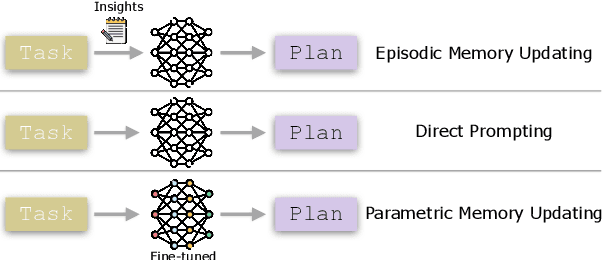
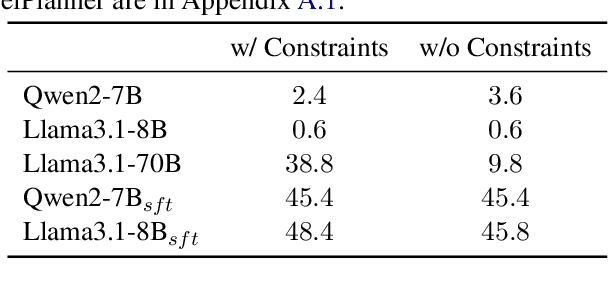

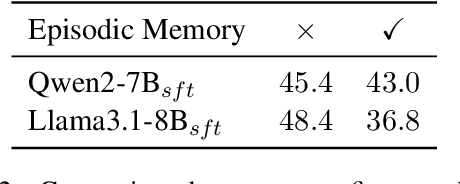
Abstract:Autonomous planning has been an ongoing pursuit since the inception of artificial intelligence. Based on curated problem solvers, early planning agents could deliver precise solutions for specific tasks but lacked generalization. The emergence of large language models (LLMs) and their powerful reasoning capabilities has reignited interest in autonomous planning by automatically generating reasonable solutions for given tasks. However, prior research and our experiments show that current language agents still lack human-level planning abilities. Even the state-of-the-art reasoning model, OpenAI o1, achieves only 15.6% on one of the complex real-world planning benchmarks. This highlights a critical question: What hinders language agents from achieving human-level planning? Although existing studies have highlighted weak performance in agent planning, the deeper underlying issues and the mechanisms and limitations of the strategies proposed to address them remain insufficiently understood. In this work, we apply the feature attribution study and identify two key factors that hinder agent planning: the limited role of constraints and the diminishing influence of questions. We also find that although current strategies help mitigate these challenges, they do not fully resolve them, indicating that agents still have a long way to go before reaching human-level intelligence.
MINDECHO: Role-Playing Language Agents for Key Opinion Leaders
Jul 07, 2024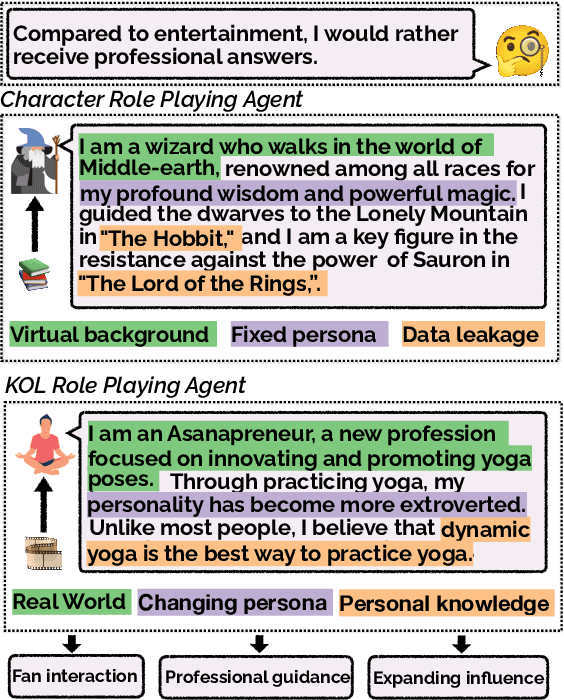

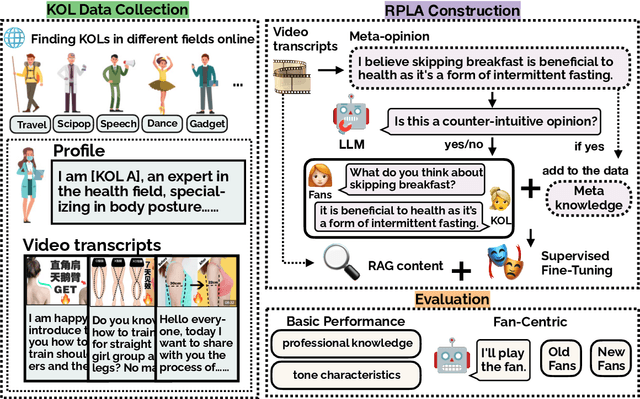
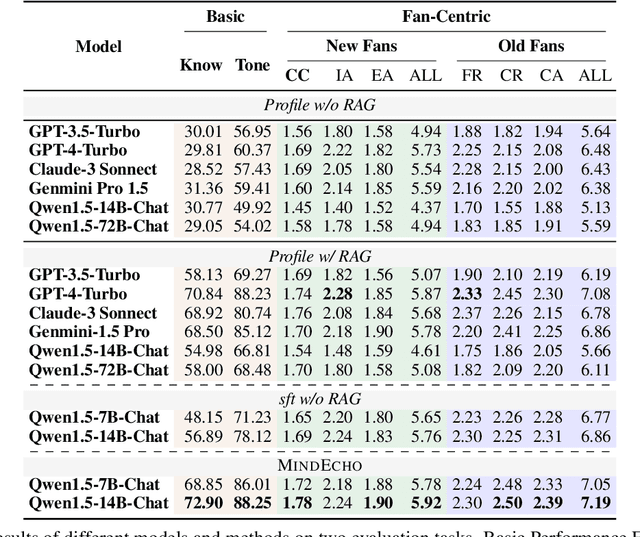
Abstract:Large language models~(LLMs) have demonstrated impressive performance in various applications, among which role-playing language agents (RPLAs) have engaged a broad user base. Now, there is a growing demand for RPLAs that represent Key Opinion Leaders (KOLs), \ie, Internet celebrities who shape the trends and opinions in their domains. However, research in this line remains underexplored. In this paper, we hence introduce MINDECHO, a comprehensive framework for the development and evaluation of KOL RPLAs. MINDECHO collects KOL data from Internet video transcripts in various professional fields, and synthesizes their conversations leveraging GPT-4. Then, the conversations and the transcripts are used for individualized model training and inference-time retrieval, respectively. Our evaluation covers both general dimensions (\ie, knowledge and tones) and fan-centric dimensions for KOLs. Extensive experiments validate the effectiveness of MINDECHO in developing and evaluating KOL RPLAs.
Exploring 6G Potential for Industrial Digital Twinning and Swarm Intelligence in Obstacle-Rich
Jun 28, 2024Abstract:With the advent of 6G technology, the demand for efficient and intelligent systems in industrial applications has surged, driving the need for advanced solutions in target localization. Utilizing swarm robots to locate unknown targets involves navigating increasingly complex environments. Digital Twinning (DT) offers a robust solution by creating a virtual replica of the physical world, which enhances the swarm's navigation capabilities. Our framework leverages DT and integrates Swarm Intelligence to store physical map information in the cloud, enabling robots to efficiently locate unknown targets. The simulation results demonstrate that the DT framework, augmented by Swarm Intelligence, significantly improves target location efficiency in obstacle-rich environments compared to traditional methods. This research underscores the potential of combining DT and Swarm Intelligence to advance the field of robotic navigation and target localization in complex industrial settings.
 Add to Chrome
Add to Chrome Add to Firefox
Add to Firefox Add to Edge
Add to Edge